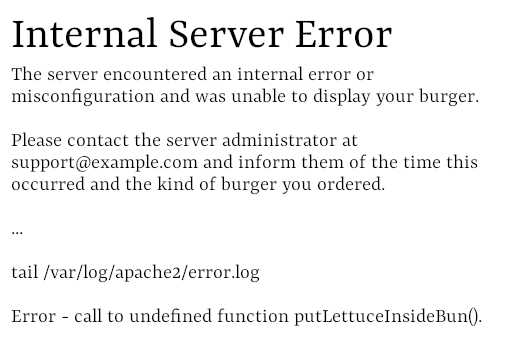

Depending on the distro, Linux may or may not be able to write to NTFS volumes out of the box.
The proper way to share drives between Windows and Linux is to format them to ExFAT.


Depending on the distro, Linux may or may not be able to write to NTFS volumes out of the box.
The proper way to share drives between Windows and Linux is to format them to ExFAT.


North Korea, China and… Oh yeah, the effing United States, come January.


Docker and Podman are both free. Podman is the lighter weight, more FOSS, also slightly more DIY option, they are intercompatible - I work on systems for spacecraft and Podman is what we use on those because it’s lighter weight. If you want to run something in docker, ChatGPT is actually pretty good at talking you through the specific setup (at least that’s been my experience).


Docker can absolutely run desktop apps.


People HATE the company, for good reason, but it consistently scores top marks for actual privacy implementation.


Since it’s a wall art project, now get it to run Minecraft and run a redstone computer on it.


Are we living in a world in which the JS/TS ecosystem is the yardstick by which we measure well written code? I mean… Wait a minute! I figured it out! This is the Bad Place!


Theoretically Yes, if your Linux partition is not encrypted, any OS can read it. Password protecting it doesn’t do anything to conceal your data, just keeps people from logging into your system while Linux is booted. If this is a security / privacy related question, there is nothing to stop a program running under Windows from reading the data on your Linux partition except
Practically No, depending on the filesystem you chose (if you went with the default, it’s likely ext4 but could be something more exotic). Out of the box Windows lacks the software / drivers to read most Linux filesystems. If this is a “can I access my files” question, you probably need to install something like this to read your data from Windows. Note that the reverse is not true. Most distros other than light weight distros like Alpine are perfectly able to read the NTFS file system out of the box. Sometimes they can’t write to it unless you install additional tools (like OOTB Debian probably can’t, but I’m pretty sure OOTB Linux Mint can if you change a setting and IDK about OOTB Ubuntu / Fedora / Arch).
The easiest way to share data between Windows and Linux is with a 3rd partition formatted to FAT32, as both Linux and Windows have no problem reading from / writing to it without additional software.
EDIT: The other poster is absolutely correct. The modern way to do this is with exFAT. What can I say? I’m a crusty old engineer.
It’s very likely that adware / spyware / malware targeting Windows users will NOT be able to read Ext4 or other Linux filesystems, unless it’s specifically targeted to do so, so you do have that added “security through obscurity” protection.


Even if this were true, did the pharmacists get a raise? Are they making more money? Or are they just seeing more patients (doing the extra emotional and mental labor that entails) and paying less attention to each one while Safeway and Walgreens pocket any increased revenue?


My TV set is a 7 year old Dell All-in-One PC running Linux Mint. It works great. It doesn’t try to sell me shit. Ads be hella blocked.


This is awesome and there is gonna be so much fraud! All the fraud.


My code projects lately?
“This project uses an API written in PHP, with HTML in Lua (OpenResty) and JavaScript. We’re starting with the PHP component, please write me a burger with cheese, bacon, lettuce, tomato, pickles, ketchup and mustard.”
“Absolutely! I’d be happy to help with that! I understand that we’re creating a burger in PHP. Here is a burger, with cheese, bacon, lettuce tomato and mustard. Explanation of the burger: The bacon is on top of the cheese, so it doesn’t fall off. The lettuce is included, to create an underlying HTML structure.”

"Um, that’s not at all what I asked for. First of all, you completely forgot the ketchup, which I explicitly told you was a requirement. Secondly, you said there was mustard, but I don’t see any. Third, the cheese is cottage cheese? No one puts that on burgers! Why would you put cottage cheese? Third, the bacon is turkey bacon. That’s not what I wanted at all. On top of that, the lettuce is UNDER the burger, not ON it. We’re not writing HTML, this is meant to be a rest API. All the output should be JSON.
Please try again. Write me a burger in PHP with pig bacon, mustard and ketchup, which you forgot to include last time, cheddar cheese (NOT cottage cheese) and tomato, pickles and lettuce INSIDE the bun. This is an API, so don’t write any HTML!"
“I appologize for the misunderstanding. Here is your burger with bacon (made from pigs, not turkey), mustard, ketchup, cheddar cheese, tomato, pickles and lettuce inside the bun. I understand this is an API, so I’ve taken out the HTML. Please let me know if there’s anything else I can help you with.”

“It looks like you’ve called a function to put the lettuce inside the bun, but you never created that function?”
“You are correct. Your PHP code would need to have the function defined to put the lettuce inside the bun. Here is your updated PHP code with the putLettuceInsideBun function included.”

“Thank you, there’s a tomato and the lettuce is inside the bun now. I’m not sure why you called the putLettuceInsideBun() function twice, but at least it’s in there now. I note there’s still no bacon, cheese, ketchup or mustard. You know what? I’m just going to write those parts myself!”
“Writing PHP code can be a fun and educational challenge! Please let me know if I can assist you any further with your PHP hot dog grilling project.”


“At 9:43 EDT, the devs decided collectively to do a “rollback” to the previous release. This was the worst possible mistake,”
No, the WORST POSSIBLE MISTAKE was doing a major roll out, then NO ONE STICKING AROUND TO WATCH WHAT HAPPENED! Seriously, who does this?? It’s like lighting the fuse on your firework show, then having an all hands staff meeting in a sound proofed trailer with blackout curtains.


We’re also using Forgejo for a small consulting team working on lots of different projects for a lot of different clients.
A couple of our team members who came from a more complex and scaled environment (particularly our DevOps / SRE guy who’s worked at such places as LinkedIn and Snowflake) want to move us to Gitlab because it’s “more powerful” but I like Forgejo because it’s just super simple. Just does exactly what I need, doesn’t give me to many more options.
We have
One of our devs wanted to use Actions. It’s hard to get that working and (at least a month ago) there were warnings that Actons aren’t mature yet and are probably insecure (looks like that may have changed with the recent jump to Forgejo 8.0). I think it’s now a non issue for us though because we were like “Dude, stop trying to role your own CI/CD, that’s why we have two infrastructure people!”


As a security professional, what finally got me to move from Apache to NGINX was OpenResty.
I sometimes still put Apache behind it, depending on my goals.


deleted by creator
You might consider Linux Mint instead of Ubuntu. A lot of what you want is going to work (and be preinstalled) right out of the box. It’s a great system to start with.
I play Stellaris and Minecraft on Linux Mint… Stellaris runs fine through Steam. Minecraft, just download the Linux launcher, it will do everything else for you.